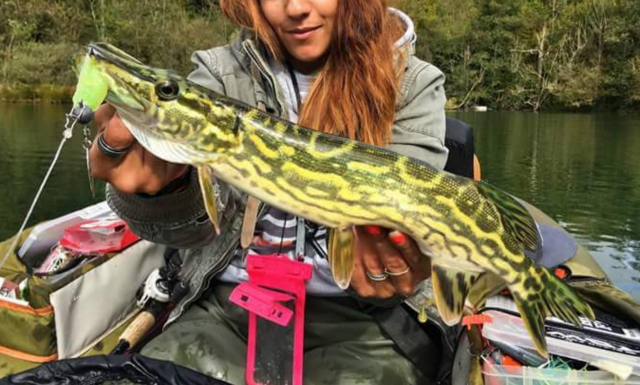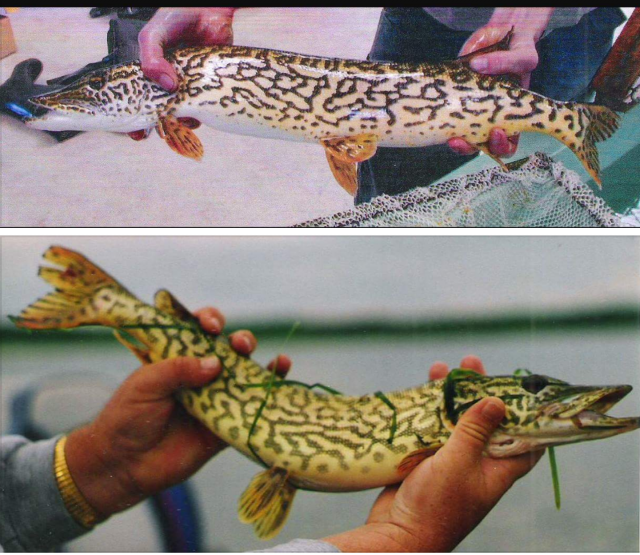I'll play devils advocate here and pose this scenario just to get everyone thinking a bit, not trying to claim right or wrong just stating a possibility.
If they are all in fact Brachyplatystoma Juruense regardless of pattern how come you don't see that much variation in any other Brachyplatystoma species?
Even the wildest looking Tigs I've seen still have the same directional shape of their stripes. I've seen maybe one that had half the striping going the opposite way but still symmetrical and obvious striping, although more wavy as adults than juvies from the head towards the tail.
Another thing I've noticed in looking at the ones I think are Brachyplatystoma sp. is that all the pics I've seen of those patterned ones seem to be fuller bodied and overall more stout looking compared to normal patterned ones. I've personally never seen a Jur or Tig over 26" in captivity although I've heard claims of them maxing out closer to 30" in the wild. Generally the two species share the same overall body shape/proportions and the biggest Tig I've seen at 26" was no where near as thick as the ones I think are Brachyplatystoma sp. The head looks broader and the overall back is taller and thicker.
If we had collection location for the ones I think are Brachyplatystoma sp. perhaps we could deduce that there is a local variant that is still the same species but always shows notably different patterns. My best comparison here would be like comparing Cichla Ocellaris vs Cichla Ocellaris "Brokopondo", they are the same species technically speaking but the ones from Brokopondo reservoir are consistently different looking.
It wasn't all that long ago that people thought there were only one or two species of TSN before it turned out there were 7 I think (can't remember exactly from the scientific journal I have at the house on Pseudoplatystomas) I just think the likelihood of there being subspecies is fairly high even if it's just a local variant that is consistently different.
The reason the really nice looking jurs have thicker bodies is because they're adults. The nice ones are always thick, because the nice coloration doesn't develop until the fish reaches it's adult size. The fish we see in the hobby typically die or are sold long before they ever get large enough to display vivid colors.
I'll admit that there may be something to the regional variation hypothesis, though I find it unlikely. When one sees juruense in a fish market, all three forms of the pattern tend to be present; there are thin yellow striped mostly black fish laying next to thin black striped mostly yellow fish and mixed in with the tiger striped "cf. Rio Nanay" type. While one location or another may have a predilection for some pattern over the other, the only anecdotal data available indicates that all forms can be found along side of one another.
Correlation doesn't imply causation, however. We in the hobby must use the data that's available when we diagnose our fish. For example, I without question know that some African tiger fish that we call tanzaniae are in fact an undescribed species, but I lack sufficient collection data to properly describe and name this haplotype, so I leave it alone because the fish fits within the overall published scientific data for H. tanzaniae.
As hobbyists, we're stuck using published data. I don't oppose people who want to call nice jurs flash zebra or something. However, until Dr. Lundberg or some other equally esteemed icthyologist figures out where the speciation lies, than what constitutes a flash zebra vs. a normal jur is purely and unequivocally in the eye of the beholder, because both fish fit the published description of Brachyplatystoma juruense. Keep in mind that I say this as someone who earns his living as a fisheries biologist.
The bottom picture you can see the patterns of two more. They both look pretty normally striped just more yellow, Im inclined to agree with same species just odd pattern.
It's also worth noting that they appear to be about half the size.
I think that there are three color forms with no really distinct differentiation; it's a spectrum of the possible. I don't think that they constitute different species.






